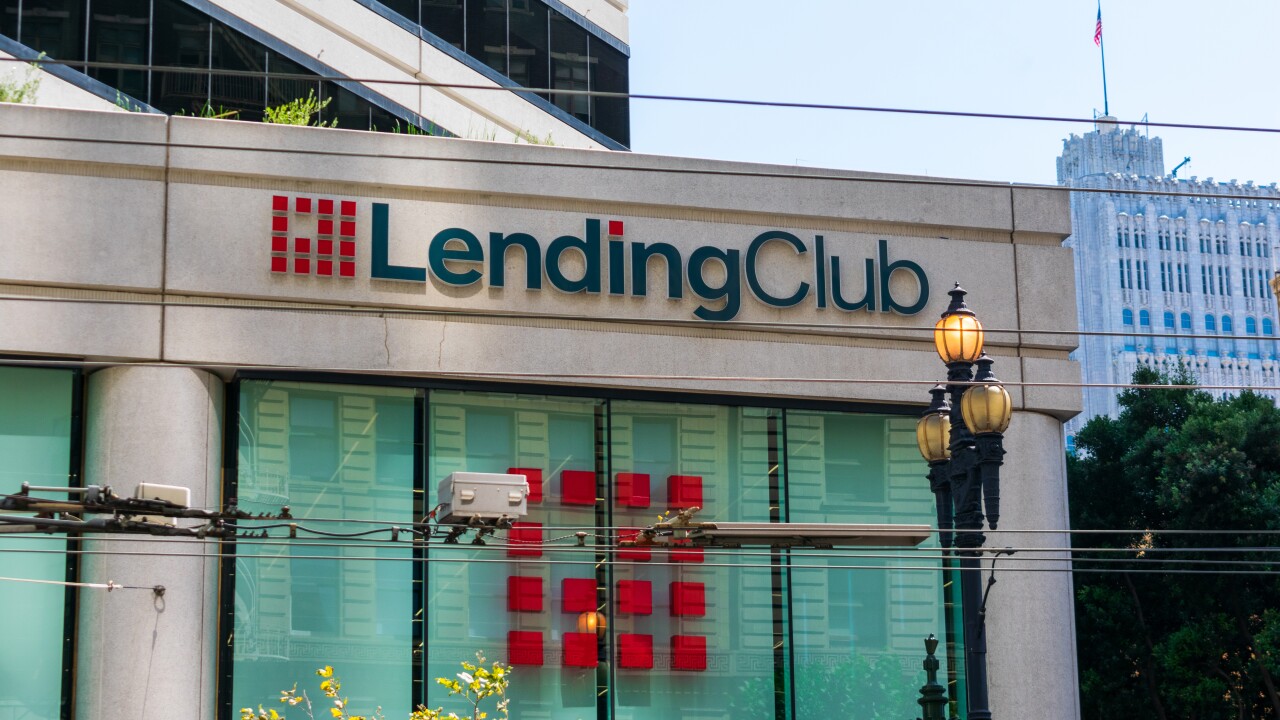WASHINGTON - Federal regulators offered their most extensive definition to date of subprime lending in examiner guidelines issued Wednesday and recommended that banks hold significantly more capital for subprime loans.
The four banking and thrift agencies said that subprime portfolios are those made up of loans to borrowers with higher-risk characteristics, including: a Fair, Isaac & Co. score of 660 or lower, or an equivalent credit rating; two or more 30-day delinquencies in the past year; bankruptcy in the last five years; a debt service-to-income ratio of 50% or greater; and a foreclosure, repossession, or chargeoff in the preceding 24 months.
The guidelines apply to institutions that have a subprime asset concentration of 25% of Tier 1 capital or higher. Examiners are instructed to require these banks or thrifts to hold capital that is one-and-a-half to three times higher than that typically set aside for prime assets.
Regulators have long tried to devise special capital requirements for subprime loans but have been beset by difficulties in precisely defining the term and in pinpointing which loans are legitimate and which are predatory. Industry representatives criticized a draft released last year as too broad.
Some experts predicted the guidelines could be burdensome.
"I think it is going to be quite expensive," said Karen Shaw Petrou, a managing partner at Federal Financial Analytics. "The new capital charges combined with the definition of subprime can expose a lot of institutions that may not think they are subprime lenders to significantly higher capital requirements."
Ms. Petrou noted that the credit score definition is higher than the threshold of 620 that the industry uses.
Though some industry representatives said they welcomed examiner guidelines rather than a regulation, they still maintained that the agencies' effort was unnecessary.
"We are glad it's guidance, but at the same time, agencies already have the supervisory tools they need," said Charlotte Bahin, director of regulatory affairs for America's Community Bankers. "Some of the provisions here are troublesome. As for their definition, two or more delinquencies is not that much, and a credit score of 660 seems a little high to me."
Regulators said, though, that the explosion of subprime lending requires action and that the capital guidelines would affect a relatively small number of high-volume subprime lenders.
"This is a recognition that the traditional capital standards were developed with traditional bank assets in mind," said Mark Schmidt, associate director in the division of supervision with the Federal Deposit Insurance Corp.
"Subprime assets are substantially higher-risk assets as a general rule," he said. "Our determination was that those higher-risk assets require higher amounts of capital. Looking at industry activity to date, our exams said that the range in the guidelines is probably appropriate for almost all of the subprime programs we have seen."
Mr. Schmidt said that only 150 institutions would automatically fall under the guidelines. Of these FDIC officials said that more than 10% are on the problem-bank list.
Though the guidelines are targeting institutions with high concentrations, examiners could look at banks with fewer subprime assets. Indeed, individual examiners would have significant discretion. For example, if examiners determine that a subprime program is particularly risky, they could require a bank to hold dollar-for-dollar capital.
An earlier draft of the proposal would have doubled capital requirements for institutions with high concentrations of subprime lending. But after being blasted by the industry for proposing an unnecessary burden, the agencies decided that guidelines would be sufficient.
"We came to recognize that not all subprime lending programs or loans are created equally," said Scott Albinson, managing director in the supervision division of the Office of Thrift Supervision. "In order to really assess how those programs are doing, we realized the need to do it on site as part of the examination process rather than trying to prescribe a one-size-fits-all regulation."
Still, some critics contend that regulators are wielding a heavy hand.
"What they are trying to do is drive higher-risk lending out of banks," said Bert Ely, an independent consultant in Alexandria, Va. "By putting on a capital requirement that is three times as high as for normal loans, or suggesting it could be as high as 100%, that is saying there is no bank out there that can properly manage this stuff. I see this as clearly trying to discourage banks from subprime lending."

Related Content Online





